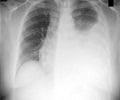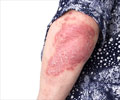When Mr. Andrew Speaker and his wife returned to United States from Europe they were immediately quarantined by the health officials.
Speaker and his family have been fighting back ever since, disputing the accounts of government health officials who contended he had been warned not to fly because he posed an infection risk to others.The disease in Speaker came to fore when he went for a check up for a rib injury. His X-ray picked up shadow in his right lung and TB was suspected. Only after intense test it was realized that the TB was drug resistance. But Speaker was not aware of it till late.
Until a few weeks ago, many Americans had never heard of extensively drug-resistant tuberculosis, or XDR-TB. But Speaker got plenty of press as he was ordered into federal quarantine, having crisscrossed the Atlantic on commercial flights while infected with extensively drug-resistant tuberculosis (XDR-TB).
In the 1970s, eradicating TB appeared possible. Now, the drug-resistant strains are winning. Of the 9 million new TB cases each year, an estimated 450,000 are multi-drug resistant, or MDR. Only two-thirds of MDR TB patients are cured. The World Health Organization estimates that in 2005, there were 27,000 cases in 37 countries of XDR TB, which is resistant to at least three of the six second-line drugs used when the first drugs fail. The cure rate for XDR TB patients is just one-third. Scariest of all, two women in Italy recently died from a fully resistant type of TB that's officially incurable. (Scientists are dubbing it XXDR TB.) Today, TB terrorizes those whose immunity has been weakened by HIV, hunger, alcoholism or other diseases. If the new strains become dominant, everyone is at risk.
The rising worldwide number of XDR-TB cases like Speaker's may herald the end of a glorious 60-year holiday from many common and highly contagious diseases -- such as polio, measles and cholera -- that once routinely ravaged vast swaths of humanity.
Ironically, there has long been a disturbing tendency to romanticize the white plague, as tuberculosis is also known.
Advertisement
XDR TB is already too widespread to quarantine. We need to combat it — globally — before it becomes pandemic. Last week, the WHO asked governments worldwide to pay up the $3 billion a year needed to fund existing TB programs — and an additional $1 billion a year to combat XDR TB. In the U.S., Sen. Sherrod Brown (D-Ohio) and others proposed spending $300 million on TB next year, much of it on research. Given that isolating and treating a single XDR patient can cost up to $250,000, the case for spending far more on prevention and control is self-evident.
Advertisement
Approximately 420,000, or 5 percent, of them have a drug-resistant strain that requires several more medications than drug-sensitive cases do; about 30,000 of these 420,000 cases are even more difficult and expensive to treat, the highly lethal XDR-TB.
Source-Medindia
BIN/M











